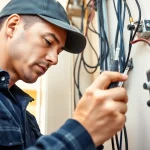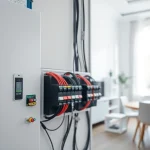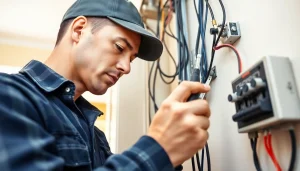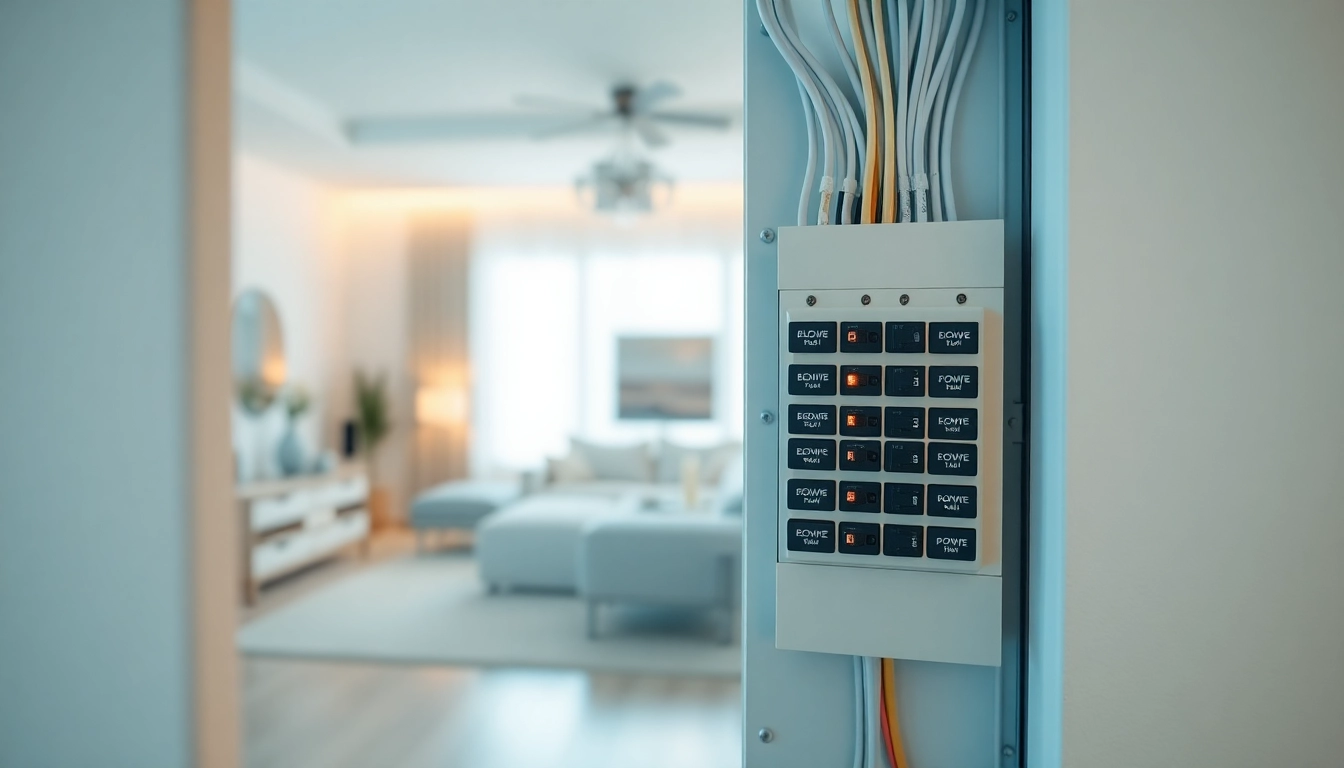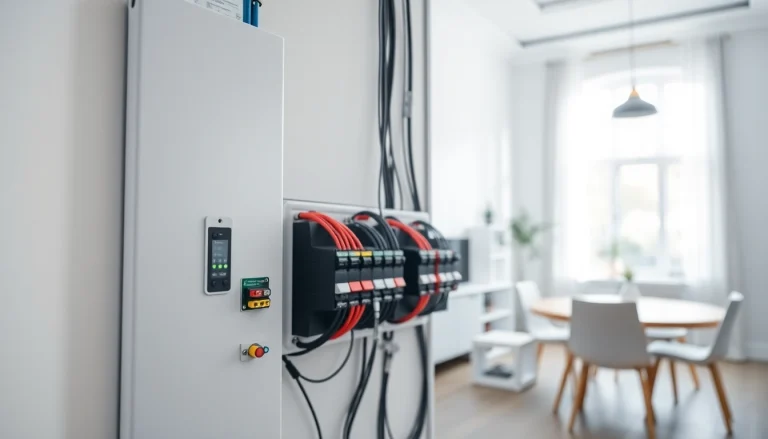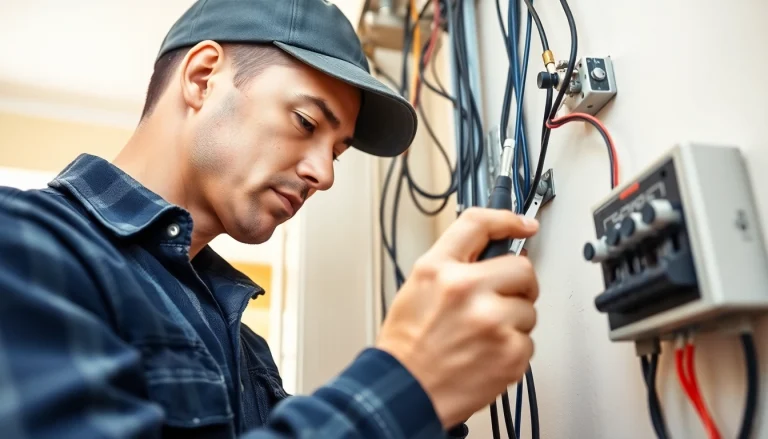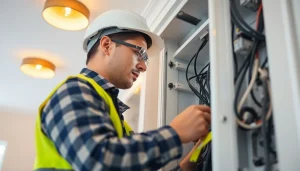What is an Electrical Panel and Its Importance?
An electrical panel, often referred to as a breaker box or service panel, is a critical component of your home’s electrical system. It acts as the central hub where the electrical circuits of your home connect. All power to lights, appliances, and electronics flow through this unit, which plays a vital role in managing electrical distribution safely and efficiently. Understanding how an electrical panel functions and its importance can help homeowners ensure adequate power supply and safety in their living environments. For more insights on electrical panel upgrades, you can visit this linked Electrical Panel guide.
Understanding the Functions of an Electrical Panel
The primary functions of an electrical panel include controlling the distribution of electrical power throughout a home and acting as a safety system. Within the panel, circuit breakers or fuses protect individual circuits from overloads. Each switch corresponds to a specific circuit, allowing for easy management and isolation of power to specific areas or devices in your home.
Key Components of an Electrical Panel
An electrical panel consists of several key components:
- Main Breaker: This is the switch that controls the power supply to the entire panel. It can shut off the electricity to the whole house during maintenance or emergencies.
- Branch Circuit Breakers: These individual switches protect specific circuits in your home. If an overload occurs, the breaker trips, cutting off power to that circuit.
- Bus Bars: These conductive bars distribute power from the main breaker to each circuit breaker.
- Enclosure: The outer casing that provides safety and protection against accidental contact with live electrical components.
How an Electrical Panel Powers Your Home
The flow of electricity begins at the utility transformer, which steps down high voltage electricity to a safe, usable level. This electricity enters your home through the service entrance and is routed to the electrical panel via the main service wires. From the panel, the electricity then spreads out through branch circuits to power outlets, lighting, and appliances. The electrical panel not only enables this distribution but also protects your circuits from overloads by automatically tripping the breakers when there is an excess current.
Signs That It’s Time to Upgrade Your Electrical Panel
Recognizing when to upgrade your electrical panel is essential for maintaining household safety, efficiency, and comfort. Here are common signs indicating it may be time for an upgrade.
Common Warning Signs of Electrical Panel Issues
Homeowners should be aware of several warning signs indicating potential issues with their electrical panel:
- Frequent Tripping of Breakers: If circuit breakers are tripping more often than usual, it may indicate an overloaded circuit or a faulty breaker.
- Flickering or Dimming Lights: Lights that flicker or dim when appliances turn on could signal insufficient power supply.
- Burning Smell or Discoloration: Any unusual smells or discoloration near the panel can indicate overheating, which poses a serious fire risk.
- Old or Outdated System: Electrical panels older than 20 years may not meet current safety standards and may lack the capacity for modern electrical demands.
Benefits of Upgrading to a Modern Electrical Panel
Upgrading to a modern electrical panel can provide several benefits:
- Improved Safety: Newer panels come equipped with enhanced safety features such as arc-fault breakers and ground-fault circuit interrupters (GFCIs), reducing the risk of electrical fires.
- Increased Capacity: A newer panel can manage increased electrical loads effectively, accommodating home expansions or the addition of high-demand appliances.
- Better Energy Efficiency: Modern electrical panels can optimize electricity distribution, reducing waste and potentially lowering electric bills.
- Enhanced Convenience: Having clear labeling and circuits can streamline maintenance and troubleshooting, making electrical management easier for homeowners.
Evaluating Your Electrical Needs for an Upgrade
When considering an upgrade, evaluate your household’s electrical needs. Consider the number of electronic devices, the types of appliances, and whether you’re planning any renovations. A larger home with multiple high-demand appliances (like electric stoves, dryers, and HVAC systems) may need a panel upgrade to a 200-amp service, whereas smaller homes might function well with 100 amps. Consulting with a licensed electrician can provide valuable insights into your specific requirements and whether an upgrade is necessary.
Choosing the Right Electrical Panel for Your Home
Selecting the right electrical panel involves understanding the different types available and their features.
Types of Electrical Panels: Which One is Right for You?
The main types of electrical panels include:
- Fuse Box: An older type of panel that uses fuses instead of circuit breakers. While they can still be functional, they are largely considered outdated and may need replacing for safety reasons.
- Circuit Breaker Panel: The most common system today, where circuit breakers control the electrical supply to individual circuits. These panels are efficient and relatively easy to maintain.
- Main Breaker Panel: This type contains a main breaker that can shut off all power, along with several branch breakers for individual circuits. Ideal for larger homes.
- Sub-Panel: A secondary panel that extends capacity when the main panel is insufficient. Sub-panels are perfect for dedicated areas, such as an addition or outdoor workshop.
Comparing Costs and Features of Different Electrical Panels
When considering the costs of upgrading or installing a new electrical panel, several factors influence the total price, including:
- Type of Panel: Circuit breaker panels are generally more expensive than fuse boxes due to their advanced safety features.
- Amperage Rating: Higher amperage panels (e.g., 200-amps versus 100-amps) will incur higher installation costs due to the larger infrastructure and materials required.
- Installation Complexity: Depending on your current system, additional work may need to be done to accommodate the new panel, increasing costs.
The average cost for a panel upgrade ranges between $1,000 and $3,000, which includes materials and labor, but prices can vary based on location and the specific needs of the home.
Professional Recommendations for Electrical Panel Brands
Choosing a trusted brand is vital for quality and reliability. Expert recommendations often include:
- Square D: Renowned for the reliability and usability of their panels, Square D offers both residential and commercial options.
- GE (General Electric): Known for their robust and durable panels, GE offers various models compatible with modern electrical loads.
- Siemens: Offers innovative designs and features, especially for high-demand applications, making them a popular choice in newer homes.
- Cutler-Hammer: Recognized for performance and quality, with a variety of options suitable for different installation requirements.
Installation and Maintenance of Your Electrical Panel
Proper installation and maintenance of your electrical panel are crucial for ensuring efficiency and safety.
How to Properly Install an Electrical Panel
Installing an electrical panel should always be performed by a qualified electrician due to the risks associated with high-voltage electricity. Here is an overview of the process:
- Planning: Assess the current electrical load and plan the panel placement according to building codes.
- Disconnecting Power: The electrician will disconnect power from the main source to prevent shock risks.
- Mounting the Panel: The panel is securely mounted to a wall, typically in a basement or garage where it is easily accessible.
- Connecting Wiring: Existing wires are routed to the new panel, and new circuits may be added based on the load requirements.
- Testing: After installation, thorough testing ensures all circuits function properly before re-energizing the panel.
Routine Maintenance Tips for Electrical Panels
Maintaining your electrical panel is key to ensuring a long lifespan and optimal performance. Here are a few helpful maintenance tips:
- Regularly inspect the panel for signs of overheating or wear.
- Keep the panel’s area clear of clutter for ventilation and access.
- Test circuit breakers periodically to ensure they trip correctly.
- Consult a licensed electrician for an inspection every few years to catch potential issues early.
DIY vs. Professional Installation: What You Need to Know
While some homeowners may consider DIY for minor electrical tasks, installing an electrical panel should always be conducted by a licensed professional due to the complexity and dangers involved. An electrician is trained to adhere to local electrical codes, ensuring that your installation is safe and compliant. Attempting to install a panel without proper knowledge can result in severe hazards, including electrical fires, shock, or electrocution.
FAQs About Electrical Panels
This section addresses common inquiries regarding electrical panels to help homeowners gain a clearer understanding of their systems.
Common Questions About Electrical Panel Upgrades
When considering an upgrade, homeowners often ask:
- How do I know if my panel needs an upgrade? Look for signs like tripped breakers, flickering lights, or an old system.
- What type of panel should I get? Choose based on your household’s power needs and the characteristics of your existing system.
- How long does an electrical panel last? Generally, an electrical panel can last between 20 to 30 years with proper maintenance.
Understanding Electrical Panel Safety and Regulations
Electrical safety is paramount in preventing fires and ensuring reliable power delivery. Key regulations include:
- Local electrical codes dictate installation standards and safety measures.
- All panels must be installed in accessible locations to allow for emergency shut-off.
- Updated electrical panels must have GFCI protection in areas like kitchens and bathrooms to mitigate shock hazards.
The Future of Electrical Panels: Trends and Innovations
The electrical panel of the future will likely incorporate smart technology, enabling homeowners to monitor energy use, manage loads remotely through apps, and receive alerts for maintenance needs. Innovations such as solar panel integration and electric vehicle (EV) charging stations necessitate higher-capacity panels that can handle these modern requirements without compromising performance or safety.


